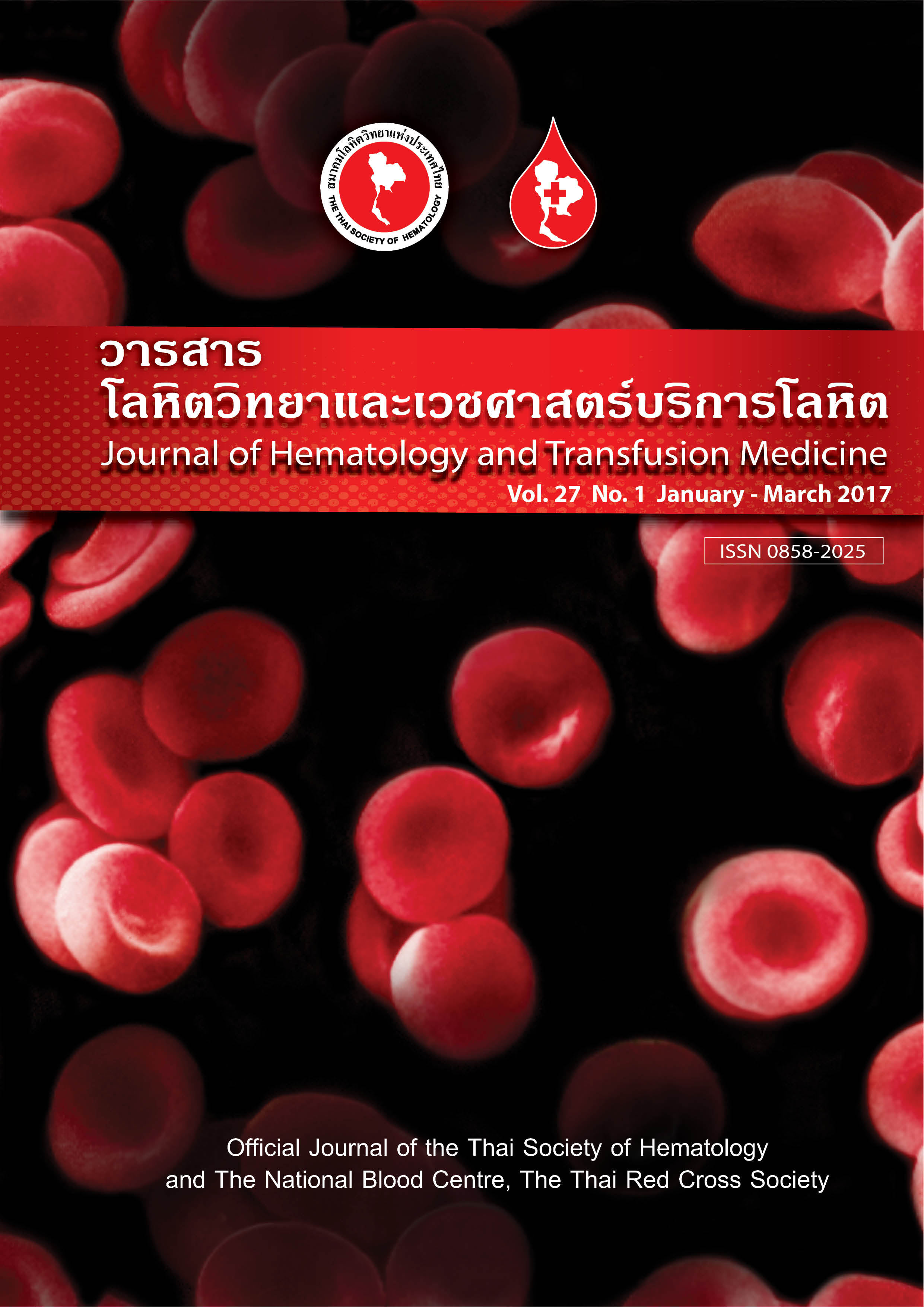Case report: Gaucher disease type 1 presenting with unexplained hepatosplenomegaly
บทคัดย่อ
Gaucher disease (GD) is a rare autosomal recessive disease that the clinical symptoms may present early among infants (type 2) or appear among adolescents and young adults (type 1 and 3). The lack of the glucocerebrosidase (ß-glucosidase) enzyme causes the accumulation of glucosylceramide in the liver, spleen, brain, bone, bone marrow and lungs. The clinical presentation varies depending on the type of GD. The neurological disorder is found in type 2 and type 3 GD. Other symptoms of GD include hepatomegaly, splenomegaly, cytopenia, bone pain or bone fracture. Glucocerebrosidase activity and mutation in the glucocerebrosidase (GBA) gene are the current diagnostic tools for GD. In this study, we illustrated the case of a 35-year-old man who had unexplained hepatosplenomaly with pancytopenia related to Gaucher disease type 1. He had low ß-glucosidase activity and GBA mutation (R120W and D409H).



